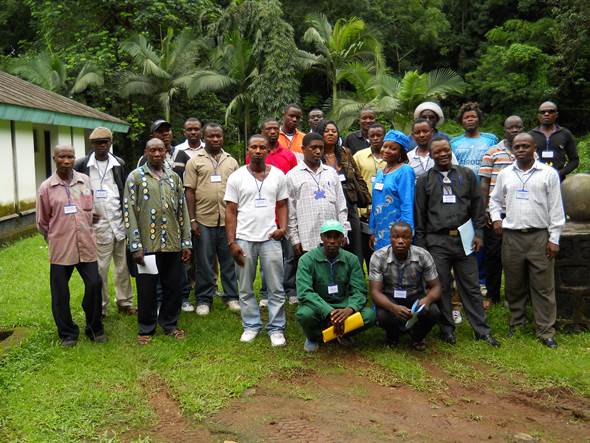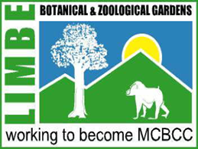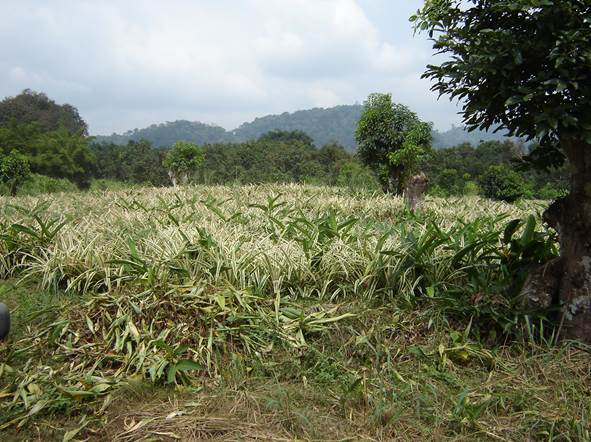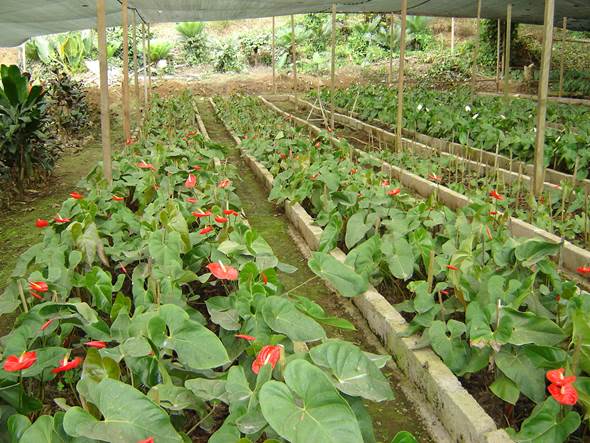Limbe Botanic Garden
Institution Code: LIMBE
BGCI Member: Yes

About the Limbe Botanic Garden
The Limbe Botanic Garden was founded in 1892 by German Horticulturists led by Dr Paul Rudolph Preuss as the Victoria Botanic Garden, for the acclimatization and introduction of economic crops. In 1916 when the German administration came to an abrupt end, the Garden was one of the very well-managed tropical Botanic Garden covering a total surface area of 200 hectares made up of a research station and many experimental plots. The British took over the management of the Garden in 1920 and carried out a thorough renovation in 1924. They managed the Garden up to the 1960s during the Independence of Cameroon where the management was handed over to the nationals. The British came back in 1988-2002 within the framework of the Mount Cameroon Project, a bilateral cooperation project jointly funded by the United Kingdom (UK) through the Department for International Development (DFID) and the Government of the Republic of Cameroon (GoC). During this period, the Garden experienced another phase of renovation and development through a strong partnership with the Royal Botanic Garden Kew (UK), the Missouri Botanic Garden (USA), The Atlanta Botanical Garden (USA),etc. Due to town expansion and the growth of population, the surface area of the Limbe Botanic Garden has reduced to 48 hectares with the core zone of the Garden still untouched. The Limbe Botanic Garden is a beautiful landscape composed of the natural tropical vegetation with diverse endemic and exotic trees, a living collection at the central field of the Garden, which is a horticultural landscape with thematic planting. The biodiversity of Limbe Botanic Garden is estimated at 1,500 taxa consisting of 1,000 herbaceous and 500 woody trees composed of timber, non-timber and ornamental.The Herbarium (SCA) with 30,000 herbarium specimen and more than 13,000 ecological specimen of over 32 types, 260 plant families, 700 genera, 1400 species of which 46 are endemic. The Integrated Conservation Education Centre (ICEC) Exhibition with materials displayed composed of 05-flagship wildlife species from five different parks of the Region. The nature trails at the Bota hill wild forest cover a distance of close to 5 kilometers. The Arboretum collection is composed of plots of Tectona grandis and Cedrela odorata.
The Limbe Botanic Garden shares direct boundaries in the South with the Atlantic Sea what provides a picturesque view from the Garden Bota Hill natural forest and the Garden prestigious Hot Spot Restaurant...
Main Address:
Limbe Botanic Garden
Ministry of Forestry and Wildlife (MINFOF)
P.O. Box 437
Limbe
Fako Division, South West Region, Cameroon P.o.Box 437 Limbe Cameroon
Telephone: 237 433312 / 332620 (Sat phone +873 761305824 +873 761305833)
Fax: + 237 433312
URL: http://mcbcclimbe.org/
Primary Email: mdjomos@yahoo.fr
Community-Based Floriculture Industry Development Project (CFIDP)
The Community-Based Floriculture Industry Development Project (CFIDP) aims to understand the cost at and scale to which it is possible for Cameroon to develop a strong floriculture industry.
The project, which is funded by the US Department of Agriculture, has helped introduce UN FAO Good Agricultural Practices (GAP) to farmers, improved the local economy and transformed the region’s landscape. Limbe Botanic Garden has also seen an increased number of visitors as a result of the project.
Project start date: March 2003
Project end date: Ongoing
 |
Meet the team.
|
ABOUT
The CFIDP aims to evaluate Cameroon’s efficiency in producing and marketing high-quality tropical cut-flowers of an international horticultural standard.
The project’s key objectives include:
- To understand what tropical cut flowers and nursery plant species, packaging and marketing avenues are best for Cameroon
- To improve understanding of production, disease prevention and pest control of tropical cut flowers
- To identify of potential plant species for development of unique flagship products to be introduced into the world’s floriculture market
The project began in 2003 by working with the Cameroonian community, introducing locals to GAP through training workshops and radio broadcasts. Farmers also worked with the project’s organisers to select pilot farms on which GAP could be used, test cultivars and propagate good quality seeds and seedlings. Surveys of the local and European markets were conducted to understand whether a floriculture industry could be developed in Cameroon.
|
|||
Cut-flower farms.
|
IMPACT
The CFIDP has since created a new farming system in the region. GAP are now being implemented by nearly all farmers, and flower production has become another source of income for communities.
The local economy has benefited and the livelihoods of individuals have improved. Some farmers have themselves been able to hire unemployed members of the community, giving these people the opportunity to earn money and learn about the plants being grown.
The landscape has also been transformed. Areas once covered by weeds have now become flower farms, and destructive erosion has been reduced in hilly regions. In addition, some native species and plants that were previously identified as weeds have now been introduced to the list of cut-flowers and have the potential to be sold worldwide.
Limbe Botanic Garden has seen an increase in attendance as a result of the project, with visitors wanting to find out more about flower production and GAP.
WHAT’S NEXT?
CFIDP organisers aim to continue this promising industry. Flower farmers in the region are currently the main suppliers to Cameroon’s biggest city, Douala. With more funding, it is hoped a flower exhibition will be organised and training can be provided to producers on floriculture processing and packaging. Organisers would also like to create a database of the common English/French and scientific names of flower species grown.
PRACTITIONERS & SPONSORS
Yves Nathan Mekembom, Technical and Research Officer, mekembom@yahoo.fr
Limbe Botanic Garden
US Department of Agriculture (main sponsor)
Ministry of Agriculture and Rural Development, Cameroon
Ministry of Town Planning, Cameroon
University of Buea, Cameroon
Cameroon National Herbarium
Royal Botanic Gardens, Kew
 |
 |
 |








